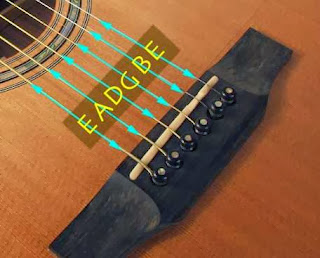Hey Again Guys,
Lets learn how to play the major scale using all the strings in this lesson. For now we will learn position 1. Position 1 here means the first way to play the major scale. The are quite a few ways to play the major scale with the guitar, the position 1 being the most important.
If you look at the diagram above, it shows the note positions of the F# major scale. the bottom red circle is the F# note on the top E string (the thickest string).
Just follow the instructions below:
Lets learn how to play the major scale using all the strings in this lesson. For now we will learn position 1. Position 1 here means the first way to play the major scale. The are quite a few ways to play the major scale with the guitar, the position 1 being the most important.
If you look at the diagram above, it shows the note positions of the F# major scale. the bottom red circle is the F# note on the top E string (the thickest string).
Just follow the instructions below:
- 2nd finger on the 6th string 2nd fret (F# note)
- little finger on the 6th string 4th fret
- index finger on the 5th string 1st fret
- 2nd finger on the 5th string 2nd fret
- little finger on the 5th string 4th fret
- index finger on the 4th string 1st fret
- ring finger on the 4th string 3rd fret
- little finger on the 4th string 4th fret (F# note.. so you have played through all the notes of the F# major scale and have reached the next octave)
- index finger on the 3rd string 1st fret
- ring finger on the 3rd string 3rd fret
- little finger on the 3rd string 4th fret
- 2nd finger on the 2nd string 2nd fret
- little finger on the 2nd string 4th fret
- index finger on the 1st string 1st fret
- 2nd finger on the 1st string 2nd fret. (F# note again.. so now you have played the F# major scale through 2 complete octaves)
Make sure that your guitar is well tuned before you play this, otherwise you will have a feeling of hearing notes that do not fall into the major scale.
With the 1st position you can learn how to play the major scale without moving your hand horizontally along the guitar fret board as opposed to playing the major scale on one string.
Now suppose you want to play the A major scale. All you need to do is put your 2nd finger on the 6th string 5th fret, then little finger on the 6th string 7th fret and so on. The cool thing is, all you need to learn is how your fingers are moving. Once you have mastered the finger positions, you can start from any note and get the major scale from there.
You can take a look at this video to know more: Major Scale Position 1






